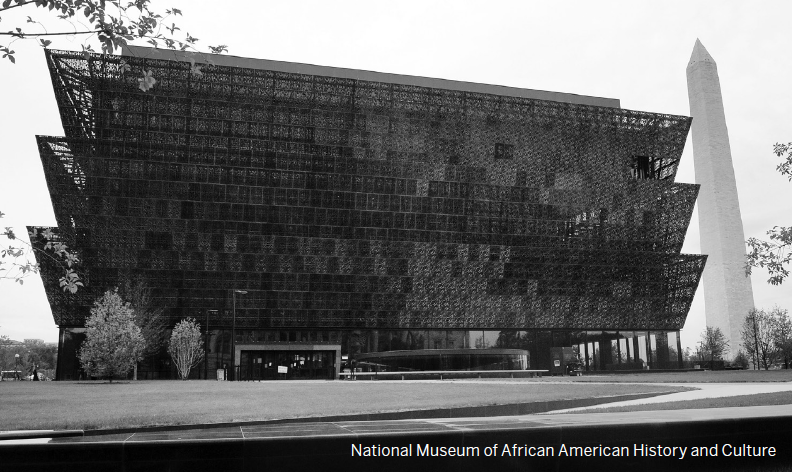
Sometimes our negotiations to achieve a desired dream take months. Sometimes they take years. The dream of building a museum of African American history on Washington, D.C.’s, National Mall endured over 100 years, ramped up in the past 15, and culminated with the opening of the National Museum of African American History and Culture on September 24, 2016. And the key was successful team building strategies.
To meet this challenging and, at times, seemingly insurmountable goal, museum champions engaged in countless negotiations—with politicians, government administrators, would-be donors, ordinary citizens, and other groups. Through careful consensus building, deal sequencing, and active listening, they moved closer to their dream, step by step, until it became a reality.
Pulling off a single deal successfully requires a certain set of skills. By contrast, designing and executing a negotiation campaign involves putting together several smaller deals to achieve a broad goal, according to Harvard Business School professor James K. Sebenius. The story of how the national African American museum of history and culture came to be offers insights to business professionals faced with the task of carrying out a complex negotiation campaign.
Back in 1915, a group of black veterans first formally proposed that the U.S. government construct a memorial to African Americans on the National Mall. In 1929, Congress approved the creation of an African American history museum but failed to provide financing, causing the project to lie dormant, according to the New York Times. In the late 1960s, prominent blacks, including James Baldwin and Jackie Robinson, lobbied Congress to fund the long-hoped-for museum, but the appeal fell on deaf ears, even as African American history museums began opening across the country.
Congressman John Lewis of Georgia, a leading activist during the civil-rights era, began pushing for a national African American museum as soon as he took office in 1987, but he faced strong opposition from some of his colleagues on Capitol Hill. “Once Congress gives the go-ahead for African Americans, how can Congress then say no to Hispanics, and the next group, and the next group after that?” Senator Jesse Helms of North Carolina complained, according to the Times.
Finally, in 2003, Congress authorized the creation of a national African American history museum. Lonnie G. Bunch III, a former president of the Chicago History Museum, was appointed the museum’s director two years later. But the authorization didn’t mean the battle was over. Congress agreed to fund only half of the museum’s $540 million projected costs. Bunch and his team would need to raise $270 million in funds from private donors to make their vision a reality.
An inclusive vision was a key part of successful team building strategies
As an African American growing up in a largely white New Jersey town in the 1950s and ’60s, Bunch experienced casual racism, including taunts and ignorant remarks from his peers, neighbors, and teachers. Consequently, Bunch says he learned how to read people and their body language. “The skill of ‘reading a room’ has proven quite helpful,” he told the Times, “whether in meetings with museum trustees, members of Congress, potential donors, or curatorial colleagues.”
By “reading the room,” Bunch understood that to win over constituents and potential backers of the African American history museum, he and his team would need engage in successful team building strategies, beginning with to clearly formulating and communicating the museum’s mission. That mission, he believed, must appeal to all Americans, not just African Americans. The museum would tell “the quintessential American story” of blacks’ progress and achievements in society, Bunch told the Times, using African American culture “as a lens to understand what it means to be American.”
Moreover, to attract crowds, the museum would need to avoid seeming to demand retribution for slavery, racism, and other painful aspects of African American history, Bunch and his team believed. Those aspects would be depicted, but the overall message would be one of perseverance and optimism.
The positive, hopeful framing paved the way for successful negotiations with politicians, potential donors, and others whose support was needed to build the museum.
A pivotal negotiation
Negotiations to determine the museum’s location were delicate and intense. At first, Congress rejected a site near the Capitol. Government planners felt that the National Mall was too crowded to accommodate another significant structure. But backers of the African American history and culture museum bristled at the idea of the institution being marginalized with a second-tier location—a slight that could easily be seen as reflecting blacks’ historical treatment in American society.
Ultimately, Judge Robert L. Wilkins, the head of the museum’s site-selection committee, convinced the Smithsonian’s Board of Regents that a prime spot on the Mall would improve the museum’s odds of fund-raising success in addition to maximizing visitors once it opened, according to the Times.
Bunch’s ability to read people doubtless served him well as he worked to connect with those who could help shape the museum’s mission and provide financial support. To attract a broad network of supporters, Bunch strove for racial and political diversity on the museum’s board—for example, recruiting former first lady Laura Bush, former secretary of state Colin Powell, and Oprah Winfrey.
The positive, hopeful framing paved the way for successful team building strategies with politicians, potential donors, and others whose support was needed to build the museum.
Crisscrossing the country, Bunch convened focus groups and met with black activists from various eras in American history to get their input on how to shape the museum. On a listening tour of black America, Bunch accumulated stories to be told in the museum and listened to advice, such as the admonition not to overlook women civil-rights activists.
When it came to fundraising, in addition to pursuing and securing corporate and foundation gifts, Bunch and his team made a special effort to reach out to black donors. Celebrities such as Winfrey and Michael Jordan made major gifts, but the museum also approached groups, such as churches, fraternities, and sororities, that don’t typically make significant donations to cultural causes. Bunch told the Times that he and his team knew “there was much more money in [the African American] community than most cultural institutions had ever tapped.”
The strategy of targeting smaller donors helped raise awareness of the museum in the African American community. Small donations poured in, ultimately adding millions of dollars that helped the museum reach its goal of $270 million. The number of small gifts raised signaled to politicians that the museum was generating broad, enthusiastic support among African Americans. “We were able to raise a level of awareness that really galvanized people to make small contributions,” American Express CEO Kenneth I. Chenault, the head of the capital campaign, told the Times.
Negotiating a plan
As the museum acquired the funds needed to become a reality, inclusivity and transparency remained at the forefront of the negotiation and planning process. Well before the museum was built, Bunch and his team took steps to portray the project as inevitable and tangible—rather than a dream that could be easily set aside, as it had been in the past. Bunch staged exhibitions at the Smithsonian’s National Museum of American History and brought members of Congress to see them. Eric Cantor, then the House Republican leader, told the Times he had been “very impacted” by an exhibition in which a statue of Thomas Jefferson was surrounded by the names of the 612 people he had owned as slaves.
Building the museum’s collection was a challenging task, given a limited budget and the fact that many significant African American artifacts were already housed in other museums. So curators hit on an innovative means of both acquiring items and drumming up support: they went on a tour of 15 U.S. cities, in the style of TV’s Antiques Roadshow. Citizens were invited to bring in heirlooms from African American culture to be appraised. The museum ended up acquiring many objects brought in by ordinary citizens.
The process of choosing a building design was similarly transparent, with the final six plans displayed at the Smithsonian. Not surprisingly, given his inclusive mission, Bunch rejected an early design that envisioned the museum shaped like a black-power fist. He praised the winning crown-inspired design, created by a team led by the Tanzanian-born British architect David Adjaye, for its “uplift, resiliency, and spirituality.”
Putting successful team building strategies into action
“I knew it was going to be hard, but I didn’t know how hard it was going to be,” Bunch reflected on his 11-year effort to open the National Museum of African American History and Culture. The same is likely to be true of any negotiation campaign on which you embark. But through careful planning, you can make the necessary work more meaningful and manageable. The following three steps should help.
1. Set a vision and goal. The more complicated a negotiation campaign is, the more important it is that you establish a clear mission and goal right from the start. Strive for a unifying vision that will have widespread appeal, as Bunch did. By doing so, you will not only increase your odds of achieving a broad network of support but also help focus your efforts on the issues and goals that matter most to you and your constituents.
2. Identify key parties. When preparing a negotiation campaign, map backward from your ultimate target deal to identify the parties who can help you reach your goal, advises Harvard Business School’s Sebenius. Think outside the box, considering parties others might overlook—such as the small donors Bunch targeted. Then consider how you might organize the parties you have identified into a manageable number of “fronts,” or groups: for example, donors, advocates, potential adversaries, constituents, and so on. You might sort parties into fronts by their interests, organizations, attitudes toward your efforts (positive or negative), or other attributes.
3. Determine the right sequence. Instead of charging ahead and negotiating on all fronts simultaneously, determine which group to approach in which order, again mapping backward from your ultimate goal. Consider how your relative progress in one negotiation alters your odds of success on other fronts, recommends Sebenius. To establish the museum’s inevitability and credentials, Bunch negotiated the location of the museum and recruited board members before negotiating with donors. He also previewed exhibitions to help donors, the public, and politicians view the museum as tangible and inevitable.
What successful team building strategies have you used in difficult negotiations?





